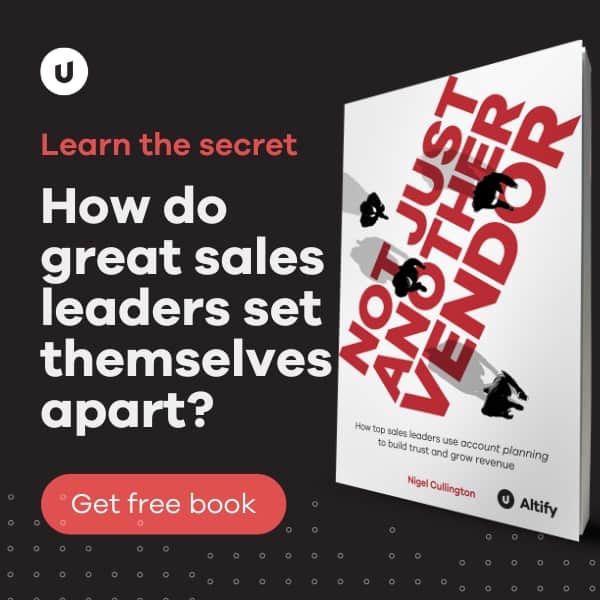As a B2B seller, is your favorite word ‘I’, ‘We’ or ‘You’?
I sure hope the answer is ‘You’ because executives today are frankly tired of hearing salespeople saying ‘I’ and ‘we’ and ‘our’ all day long.
Want to make a buyer’s eyes light up? Be the rare seller whose entire focus is quite clearly on understanding the realities and unique needs of the executive you’re talking to. Be the rare seller who’s all about ‘You, You, You.’
Are you furiously uncovering insights into your buyer’s business? Rest assured: your competitor is. And in B2B sales, today more than ever, the most curious seller wins.

Digging for gold – the buyer’s true problems
A recent Altify survey showed that just 61% of salespeople think they’re good at uncovering their customers’ business problems. And only 54% know how to access key players to discover this critical information. Given that these skills are both crucial to winning sales, the stats paint a worrying picture.
At Altify, our conversations with customers always begin with finding out what challenges and obstacles they face (call us to test it) so we can determine as quickly as possible if the value we offer matches their needs.
It’s basic qualification 101, and something we cover in more detail in our eBook, The Art of Sales Qualification, which is free to download here.
We recommend you follow the same procedure. Because in today’s competitive world of B2B sales, it’s really not an option. You need to have a deep understanding of your customers’ business problems, and you need to know their people. Without this info you’re simply unlikely to create value or make a sale.
How to make sure your salespeople understand the buyer
The key to outdoing your competitor is to know who you’re talking to and what you need to talk about, before presenting the right solution.
One way to do this is by plotting your buyer’s pressures, strategies and obstacles — one of Altify Account Manager’s key capabilities.
With this context in mind, your rep can identify the real problems and prioritize the business areas and potential solutions where value can be added. You can connect your solution with the customer’s business problem, articulate Unique Business Value. And close more deals.
Be the seller who understands the problem. The one who brings the solution. Because if you don’t, you can be sure one of your competitors will.


